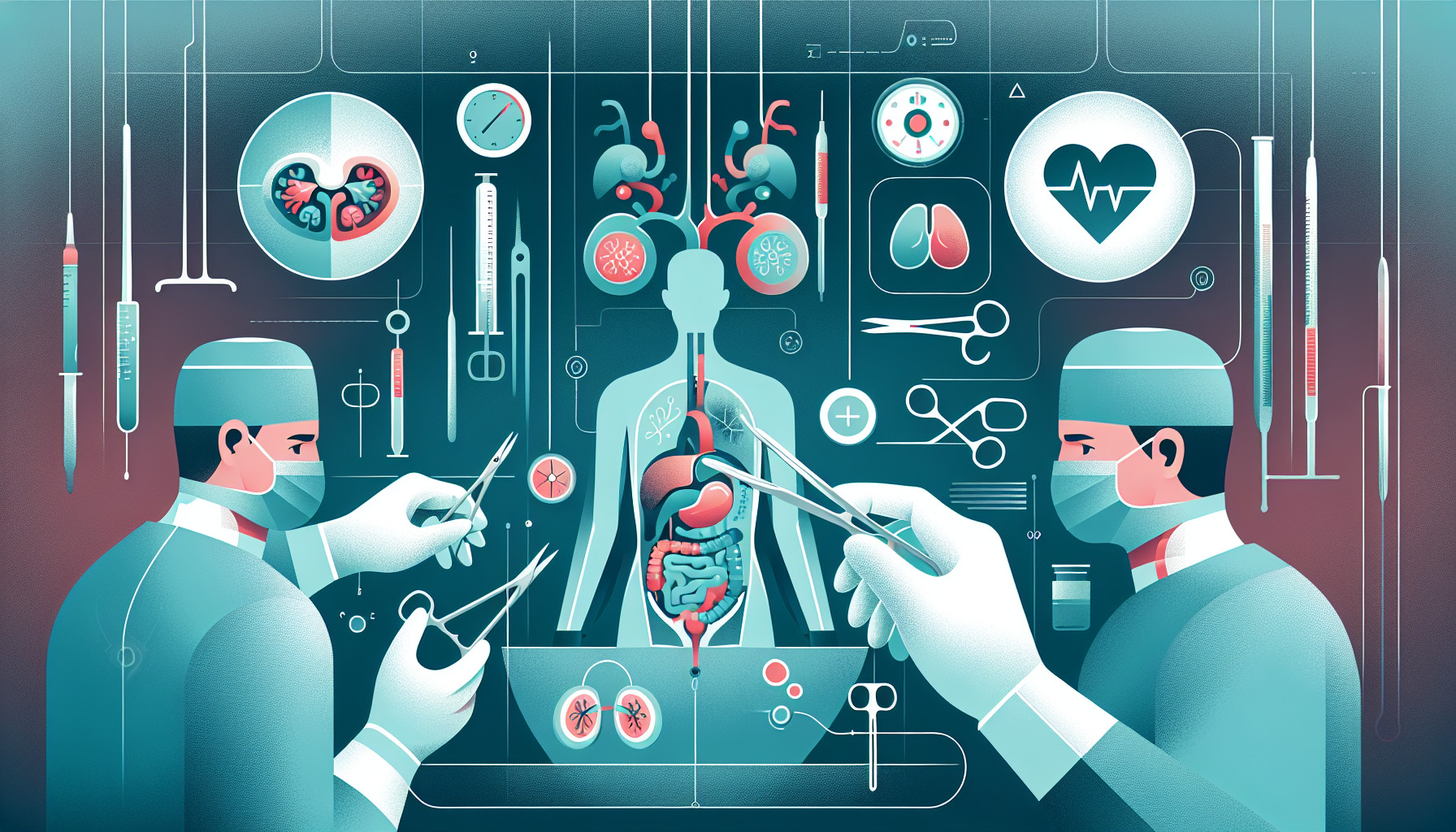Our Summary
This research paper is about a medical condition known as neurogenic bladder, which is usually a result of other health problems like spina bifida and Arnold-Chiari malformation. This condition reduces the ability of the bladder to hold and release urine, which can harm kidney function if not treated.
When usual treatment methods fail, the most common procedure is bladder reconstruction using a part of the bowel. This is often accompanied by the creation of an artificial channel using the appendix to help with urination. Traditional open surgery has been effective and safe for patients with this condition.
However, robot-assisted surgery could provide several benefits, including better cosmetic results, shorter hospital stays, and less pain after the procedure. This type of surgery could also reduce the number of adhesions, which are abnormal scar tissues that can form after surgery.
Despite these potential benefits, the complex nature of robot-assisted surgery has made it less widespread. This paper aims to provide a detailed guide on how to perform robot-assisted bladder reconstruction and creation of artificial urinary channel in children, along with a review of the existing literature on the care of these patients before, during, and after the operation.
FAQs
- What conditions most commonly cause neurogenic bladder in pediatric patients?
- What is the preferred treatment for pediatric patients with neurogenic bladder when medical management fails?
- What are the advantages of robot-assisted laparoscopic ileocystoplasty and Mitrofanoff appendicovesicostomy in pediatric patients?
Doctor’s Tip
One helpful tip a doctor might give a patient about pediatric urologic reconstruction is to ensure they follow their postoperative care instructions closely. This may include proper wound care, monitoring for signs of infection, and attending follow-up appointments to ensure proper healing and optimal outcomes. It is important for patients and their caregivers to communicate any concerns or changes in symptoms to their healthcare provider promptly.
Suitable For
Patients with neurogenic bladder, specifically those with conditions such as posterior urethral valves syndrome, spina bifida, tethered cord, sacral agenesis, and Arnold-Chiari malformation, are typically recommended pediatric urologic reconstruction. These patients may experience diminished bladder capacity and/or reduced compliance, leading to high-pressure voiding that can result in renal function deterioration if left untreated. When medical management is unsuccessful, bladder reconstruction with bowel (augmentation ileocystoplasty) is often the preferred treatment option. This procedure is commonly accompanied by the creation of a continent catheterizable channel, with the appendix being the most frequently used conduit (Mitrofanoff appendicovesicostomy). Both conventional open surgery and robot-assisted laparoscopic surgery have been shown to be effective and safe approaches in these patients, with the latter offering advantages such as a shorter hospital stay, less postoperative pain, and decreased adhesions. However, the complexity of robot-assisted surgery has limited its widespread adoption in pediatric urologic reconstruction.
Timeline
Pre-operative phase: The patient undergoes a thorough evaluation by a pediatric urologist to determine the need for urologic reconstruction. This may include imaging studies, urodynamic testing, and other diagnostic procedures. The patient and their family are educated about the procedure and potential risks and benefits.
Intra-operative phase: The patient undergoes robot-assisted laparoscopic ileocystoplasty and Mitrofanoff appendicovesicostomy. The surgeon uses robotic technology to perform the surgery with precision and minimal invasiveness. The procedure involves creating a larger bladder capacity using a segment of the patient’s small intestine and creating a continent catheterizable channel using the appendix.
Post-operative phase: The patient is closely monitored in the hospital for any complications such as infection, bleeding, or urinary retention. Pain management and physical therapy may be provided to help the patient recover. The patient may need to learn how to catheterize themselves through the continent channel.
Follow-up phase: The patient will have regular follow-up appointments with their pediatric urologist to monitor their progress and adjust their treatment plan as needed. Long-term outcomes such as improved bladder function and quality of life will be evaluated.
What to Ask Your Doctor
- What are the potential risks and benefits of pediatric urologic reconstruction for my child’s specific condition?
- How long is the recovery process typically for pediatric urologic reconstruction surgery?
- What are the long-term outcomes and potential complications associated with pediatric urologic reconstruction?
- Are there any alternative treatment options available for my child’s neurogenic bladder condition?
- What is the experience and success rate of the surgical team in performing pediatric urologic reconstruction procedures?
- Will my child require ongoing medical management or follow-up care after undergoing pediatric urologic reconstruction?
- How will pediatric urologic reconstruction surgery impact my child’s quality of life and daily activities?
- Are there any lifestyle changes or restrictions my child will need to follow after undergoing pediatric urologic reconstruction surgery?
- How can I best support my child before, during, and after pediatric urologic reconstruction surgery?
- Are there any resources or support groups available for families of children undergoing pediatric urologic reconstruction procedures?
Reference
Authors: Barashi NS, Rodriguez MV, Packiam VT, Gundeti MS. Journal: J Endourol. 2018 May;32(S1):S119-S126. doi: 10.1089/end.2017.0720. PMID: 29774817
